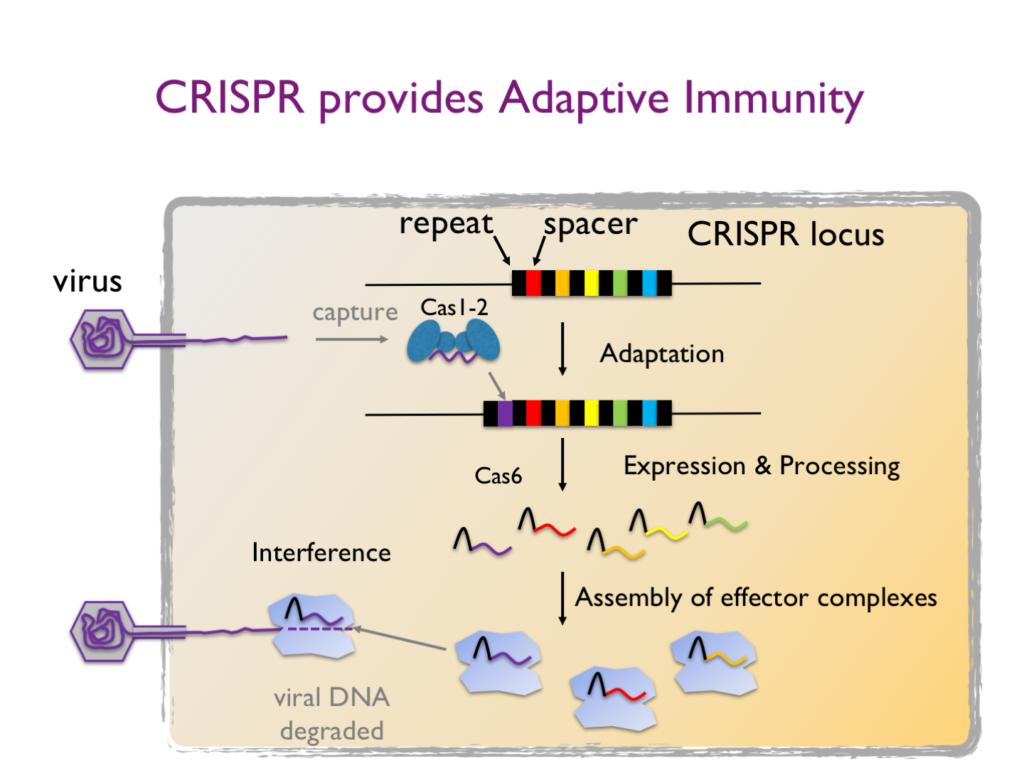CRISPR
CRISPR-Cas is an adaptive immune system present in many microbes. Cells have a chance to capture invading DNA, incorporating small pieces into the CRISPR locus in a process known as “Adaptation” and forming a library or memory of past infections. This requires the Cas1 protein, which is an integrate. The CRISPR locus is transcribed and processed to generate CRISPR RNA (crRNA) and loaded into effector complexes to provide protection (or “Interference”) against future infection.

The Type II effector complex, Cas9, has shown great utility in genome engineering, but is far from the whole story. Sulfolobus solfataricus has three different effector complexes, CASCADE, CSM and CMR (Type I and III), that target viral DNA and RNA. More recently, type V and VI effectors have been described in other organisms.

We are particularly interested in the Type III effector system (also known as Csm or Cmr). This system detects invading viral RNA and responds in three ways. Firstly, it cleaves the target RNA (known as “backbone cleavage”); secondly, it activates an HD nuclease domain which cleaves viral DNA; finally, it activates a cyclase domain which converts ATP into cyclic oligoadenylates (cOA) – a new class of secondary messenger which signals viral infection in the cell by activating ribonuclease and transcription factors.
